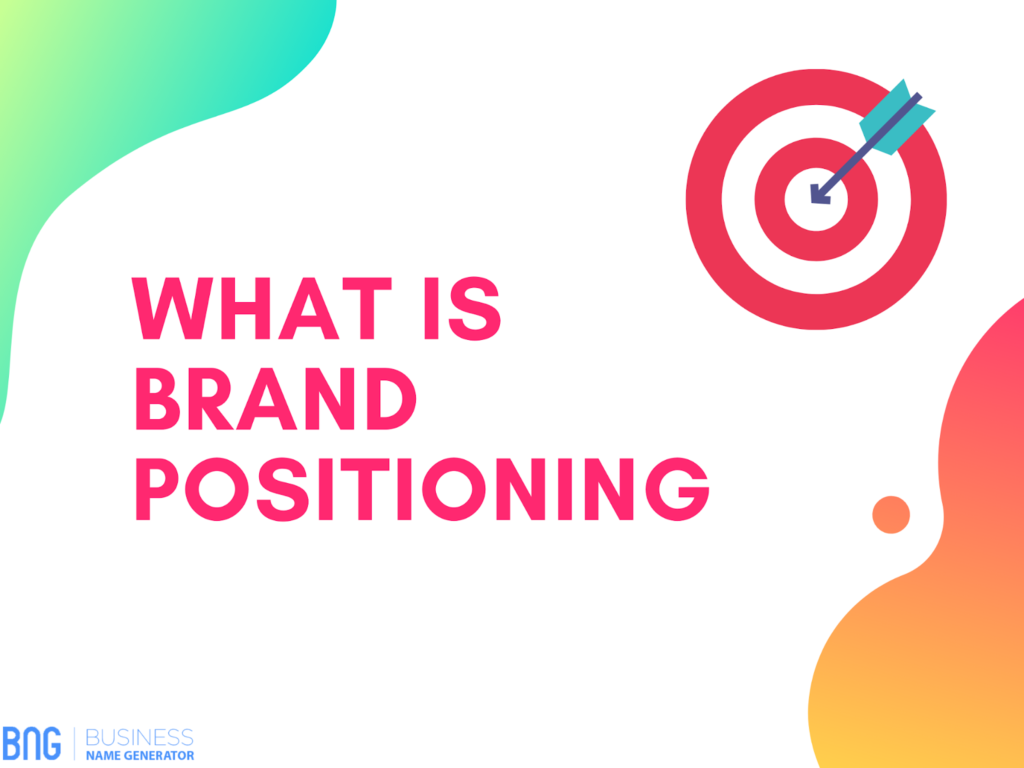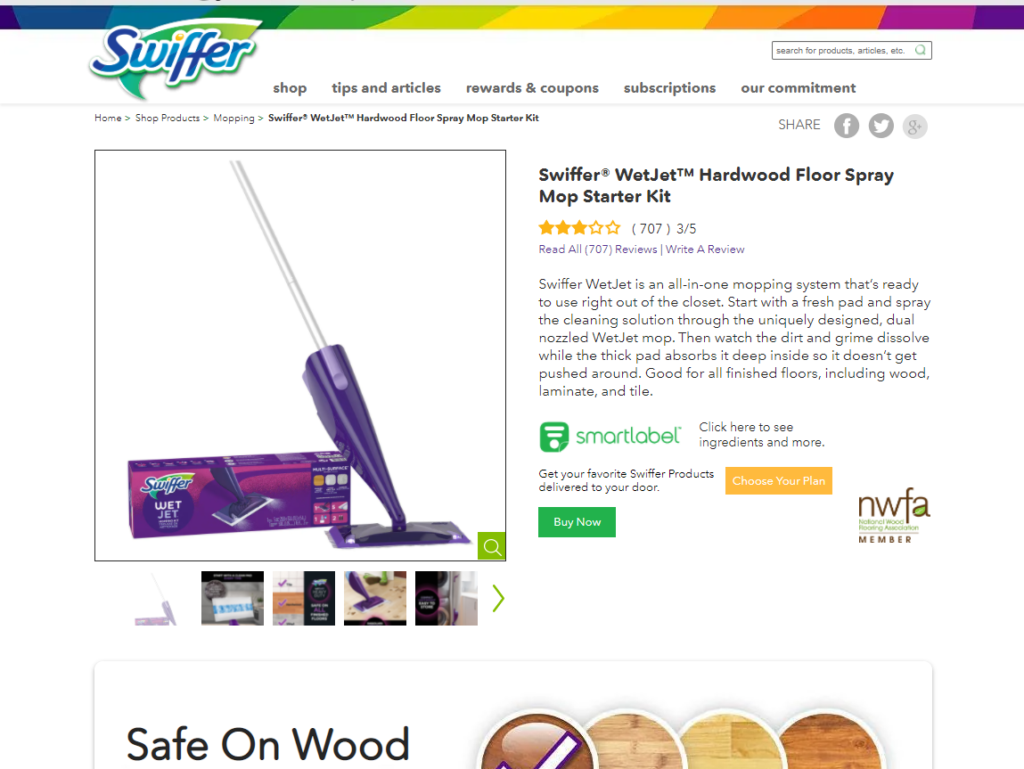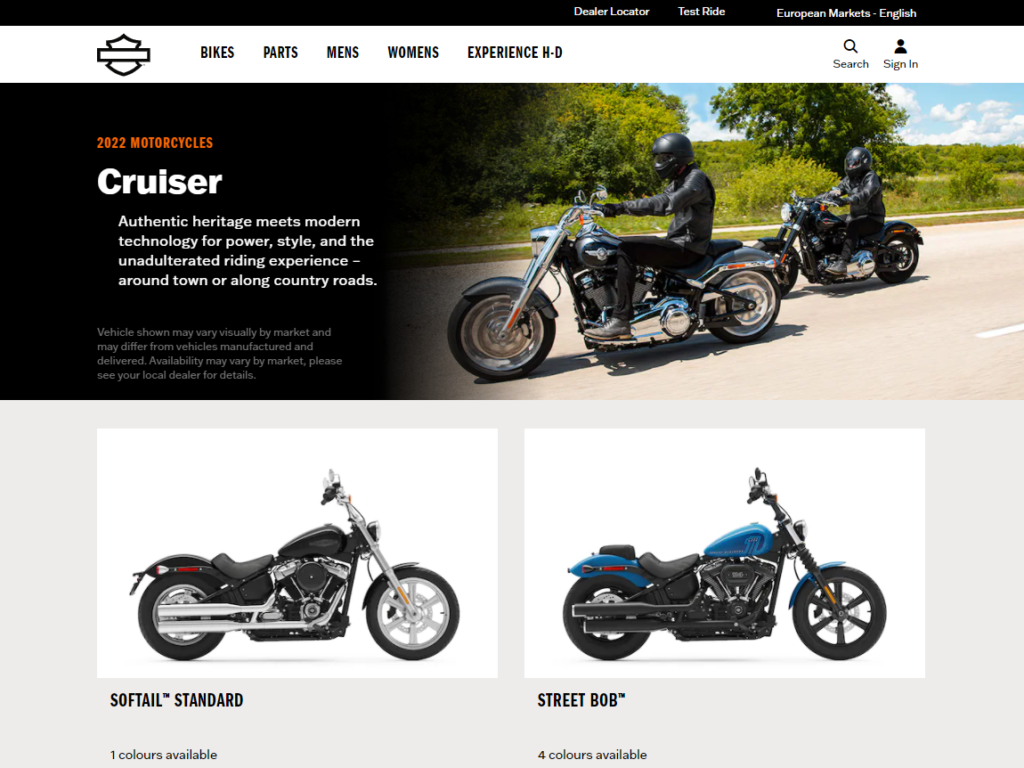What is brand positioning?
Brands, brands everywhere. In a vast sea of brands, you can easily get lost and can’t really figure out which ones are the real deal and which ones are not. You may think, “oh, my brand is the real deal, but how do I make my customers see this?” You’re in the right place. We will guide you to help with your dilemmas and questions.
First, let’s start with what actually is a brand, and we can build from there.
The key purpose of a brand is to differentiate products from different manufacturers. It can be anything from a name, phrase, sign, symbol, shape, or a combination of all of those with the purpose of identifying products. To a company, a brand makes it easier for them to track their products, offers legal protection of their product’s unique qualities, and makes it easier to patent the processes of manufacturing and their packaging.
Your brand name is one of the things that can help you stand out from the competition. We understand the importance of having the right name, that’s why we created our business name generator. This easy-to-use tool can help you generate interesting name ideas for your brand. You’ll save time and improve your chances of getting a name that will help you stand out. You can find the generator at the top of this page.
For the customers, a brand means easier identification of a manufacturer and also helps them recognize different products from different companies. Based on their experiences, customers can easily know which products will meet their needs best. If a customer knows the brand and already has an opinion on it, the customer will make their choice fast. This is because they already know your brand’s quality and if it is worth their purchase. Brands live in the minds of the customers, so based on knowing the brand, the customer, therefore, reduces the possibility of a bad purchase. Your customers will be faithful to your brand as long as it will fulfill the promises you made with the brand.
Let’s compare a brand with an iceberg. On top of the iceberg, we have a logo and a name. These are visible parts of a brand. The invisible part, or the part that is hidden under the surface, are values and culture. So you see, you can’t just focus on the visible parts of the brand. You have to dig deeper and also focus on parts we can’t see with our naked eye. This is what gives a company value and a competitive advantage to the brand.
We can say that the brand can play a tangible or intangible role. Tangible role is more functional, rational and is connected to the actual usage of the product. On the other side, the intangible role has a more symbolic and emotional aspect, which is connected to what the brand means to customers. It is known that customers don’t buy products just like that. Their consumption is based on the meaning a brand has to them, and want to buy a product with a personality and value.
The value of the brand can be seen from three different angles:
- Company related values: Values, ideas, norms, and habits that ensure the value of the company;
- Values that summarize the brand: Emphasizing the core of the brand;
- Customer perceived values: These are more explicit and add value to the customer
Building a successful brand amplifies the value of the company for the customer. This means that it creates a firm foundation for expanding product range, improvements of existing products and so on.
A successful brand is well adjusted so that the customers perceive the unique qualities and extra value it brings to them. We say a brand is powerful, when it encourages loyalty, love and affection in customers towards it. What we mean by that is that people don’t just buy stuff, they buy products with personality and we call them brands. We can say that a brand is a complex concept consisting of strategies. It’s a continuous process of different activities throughout the whole company to meet their client’s needs. We can separate brand interpretations into three different categories:
- Input perspective: Logo, company, positioning, personality, vision, added value, identity
- Output perspective: Brand image, relationship
- Time perspective: Evolving entity
Now that we know where brand positioning comes from, let’s look at it a little further.
Each day we are bombarded with choices and data. Because of that, our minds start to take over and start to raise barriers to protect itself from too much data. If your brand stands for something, positioning it will only reinforce that. Make something boring into a fun and memorable experience.
Brand positioning basically means ensuring that your customers will instantly associate a brand with a benefit that it gives them. Keep in mind that positioning and awareness are not the same things. When we talk about positioning, we want the customers to connect the brand with a benefit of the product, while awareness means that customers recognize your brand, sometimes without knowing exactly what the brand stands for or even sells.
For example, if we say BMW, your first thoughts would be performance, and if we say Volvo, you’d say safety. That is brand positioning. You want your brand to mean something to your customer, so these companies chose a product quality, positioned it right, and now everyone knows what their product represents.
Positioning your brand isn’t something you physically attach to your product but rather something you do in the minds of a potential buyer as in making this potential buyer aware of your brand. This process has to be carefully planned and has to take into account customers’ preferences, needs, competition, and also the environment. Think of brand positioning as a process of designing an offer with your customer in mind.
We can divide the brand positioning process into three phases:
- assess the position of all products and brands that are currently in the market,
- determine your customer’s preferences,
- create a marketing web.
In this process, you have to be aware that your brand offers customers something they can’t get from your competition. That way, the customers will see your brand differently, and it will make the brand more memorable.
It’s hard to differentiate all the products and brands, but it certainly is good to choose a significant product quality and build your strategy around it. The more qualities we want to emphasize, the harder it is for the customers to remember them all. Emphasizing too many product qualities can also make the customers less trusty of it. You have to choose a functional quality of your product, the one that the customers will appreciate, not the one that the company feels it’s important. Take your time and include your customer in the process of development.
Making a clear and unique position of your brand is far from making the job done. If your strategy is successful, your brand will become imprinted in your customers’ minds, and they will connect your brand with a unique and functional quality. Your strategy has to make the advantages and weaknesses of the brand clear, so it can differ from the competition. But nevertheless, they have to be in sync and connected.
There can also be traps with brand positioning. If your brand positioning is weak, the customers won’t know what the brand is about and will not find it interesting. If your brand positioning is too strong, the customers will have a too narrow perception of it. Unclear positioning makes the customers confused because you either threw a lot of product advantages at them, or you changed brand positioning too often. The fourth trap is doubtful positioning which means that customers sometimes don’t like to believe claims about the product, prices, and the manufacturer. If you want to avoid these mistakes, you have to think about this process and choose the one that has the best chances of success.
Positioning your brand will determine how your customers will view you. If you position your brand right from the beginning, people will want to pay more for your products or services. Your brand should scream louder than any other brand in the market. This ensures the visibility, meaningfulness, and valued position of your brand in the eyes of customers.
To complete this chapter, let’s take a look at the key characteristics of a good brand positioning strategy. Your brand has to:
- Stand out
- Send a clear message that’s easy to communicate
- Find a unique position in customers’ mind
- Be desirable to the customer
- Be a deliverable promise of your brand to the customer
- Differentiate from your competitors
- Have recognizable features of the product
- Be validated by the customer
Why is brand positioning important?
So, you have a great product… now what? Start by defining who is your target audience and what you are trying to promote. Brand positioning done right will highlight what your brand offers, explain how your customers benefit from your brand, and differentiate your brand from tough competition.
If you’re asking yourself why brand positioning is important, you have to know that with the right positioning of your brand, you aim to influence existing perceptions of your customer to build a strong mental association in your customers’ minds. Effective brand positioning makes a brand appear more relevant and appealing. Here are four factors that are important with brand positioning:
- Clarity
- Consistency
- Credibility
- Competitiveness
Clarity
Clarity is an important factor in brand positioning because how you communicate the brand directly impacts your customers. It involves knowing how to do branding as part of your business, adjusting your existing brand and its features to see what can be improved, analyzing competition to take the lead in the market, and creating a brand strategy that aligns with your company’s values.
You have to understand your brand. Ask yourself what your expertise is, what makes you unique, what your purpose is, and why you created this brand. When you have the answers to all that, you can easily communicate this to your customers.
Be straightforward and unambiguous so your products will be memorable.
Consistency
Brand consistency means that you have to make sure that everything you do and produce under the brand has a common visual appearance and message. This ensures your brand is represented in an attractive and consistent way, whether this may be email marketing, advertising, reports, website, and so on. Consistency leads to brand recognition, helps build trust and loyalty, and can also evoke positive emotions amongst customers.
Stay committed to remaining consistent with the message you want to give your customers. It is necessary to ensure your customers won’t be confused about what you are trying to sell them.
Credibility
Marketing experts would say that credibility is a psychological factor that could trigger buying impulse of customers. We will not get further into psychological explanations. In this case, credibility refers to your brand’s reputation and its ability to sell the products. Customers would most often choose companies that are certifiably experts in their field. So whatever your company manufactures, make sure you’re doing it right.
Competitiveness
If you’re not the first company that is selling something unique, you’re bound to have competitors. If you don’t have them, you will have them soon. Your goal has to be higher market share, increased revenues, huge profit, and higher growth than your competition. To achieve this, you have to analyze them and try to make things they do good even better.
The benefits of a successful strategy are countless. To name a few, with a good strategy you get continuous sales since the ad you put out is embedded in your customers’ minds. It also helps get better brand recognition and visibility, market authority and helps build credibility.
Customers want to be able to identify with your company, so once you know exactly what your brand focuses on, you can make it so much more appealing to them. With that, they will be able to connect with your brand. Let’s dive into a few of the benefits of good brand positioning:
- Your brand is intuitive: Find out what your customer wants and needs. That way, it will be easier for you to adjust your product, design, service etc.
- It intensifies your storytelling: Telling a story about your brand is much easier when you have an insight of your brand’s uniqueness and what your clients need.
- It makes you stand out: In a sea of competition, brand positioning allows you to speak directly to the customers you want to attract, which means avoiding crowds that do not care about your brand.
- It justifies your prices: Focus on comparing your brand to competition and find out their specific offer. This way, you can establish if your prices are justifiable.
- It encourages buying: People don’t want to spend much time thinking about whether to buy something or not. Trigger an emotional response from those customers and increase the chances of buying from you.
- It allows competing with value: WIthout brand positioning, vagueness is the only thing you can offer, so make your brand more valuable to your customers and satisfy their needs better than the competitors.
How to create a brand positioning strategy?
We know that brand positioning is important and that it comes with different benefits for your business. But how do you go about creating your brand positioning strategy?
This is what we’ll try to answer in the following chapter. We’ll go step-by-step through the whole process to help you understand where positioning comes from. Let’s dive into it.
Customer research
Every successful brand positioning strategy starts with customer research. You have to first know who you’re selling to if you want to sell well. Finding your target audience is the first thing we should do when positioning our brand.
- The three main questions that we should answer with customer research are:
- What problems do our products or services solve?
- Who is most likely to run into these problems?
- When do these problems arise?
The more we know about our target audience, the better we can position our brand and craft the right brand message. We want to know their deepest fears, wants, and desires to talk to them on an emotional level. We want them to feel connected to our brand. And we want them to feel like we’re really listening. Because we are.
One of the biggest mistakes brands make is they try to target everyone. If you try to speak to everyone, your message will get diluted. Remember, the more target your messages are, the stronger your connection with your target audience.
There’s a simple trick brand strategists use when defining the target audience. Instead of thinking about who you want to target, think about who you don’t want to target. Keep on eliminating different segments until you’re left with a well-defined group of people that are most likely to feel drawn to your brand.
Sometimes, you can’t match your target audience to a single segment. In that case, you’ll have to use different market segments for your audience. It’s important you divide your audience if needed so you can prepare targeted messages for each group of people you’re addressing. Let’s look at what a target audience looks like.
Imagine you’re selling power tools. You might be tempted to define your target audience as all men interested in home repair, which isn’t bad, but we can do better. If you do your market research right, you might learn that most of your potential customers are middle-aged married men looking for power tools they need to repair the house they live in with their family. Do you see how targeted this is?
Knowing this much about your target audience helps you create specific marketing campaigns and connect with them on a deeper level. And this is what we’re looking for.
We won’t bore you with different customer research strategies available. Let’s just mention the most popular ones:
- Surveys
- Interviews
- Focus groups
- Observations
As you see, you don’t have to be all scientific about this process. You can create very specific target audiences from observations alone. There’s really no reason not to invest some time to define your audience. This is a crucial step that will help you position your brand better.
Types of brand positioning strategies
Cost-based positioning strategy
This is where we say we offer the same thing as our competitors, but we can offer it for less. The good thing about this strategy is that it appeals to a broad group of people. No one wants to pay too much for the things they need. The downside is we often associate cheap products or services with bad quality. And that’s the last thing you want to be associated with. You might also run into the trouble of competing with brands and driving your prices even lower. We call this phenomenon the race to the bottom, and it often happens to brands that want to be known as the cheapest option on the market.
This is a solid brand positioning strategy if you know you can implement innovative technology that lowers the cost of production or if you have suppliers that are able to provide you with materials or products cheaper than what your competitors are paying for.
Quality-based positioning strategy
This is when companies want to show that the quality of their products or services is better than the average product or service on the market. They usually show this through exceptional craftsmanship, high-quality materials, sustainable practices, small batch production, and exotic features. Quality-based positioning can be hard to implement. Saying that you’re offering something better is often seen as ambiguous. This comes back to target brand research. You really have to know your target audience if you want to sell them higher-quality products as your main competitive advantage.
You have to be sure that they’re willing to pay a premium price instead of going for cheaper options on the market that might offer the same benefits.
Specialization positioning strategy
This is a tactic most commonly used by service providers when they decide they want to compete against generalists in the market. Let’s say you have a copywriting agency and you want to compete in a competitive market. Instead of offering all sorts of copywriting services, you pick something that you’re really good at, for example, landing page copywriting – the more specialized the service you’re offering, the better. You can now position yourself as a specialized agency in landing page copywriting which puts you at an immediate advantage against other agencies that offer full-scale services in the copywriting world.
The benefit of this positioning strategy is that it can quickly help you become the authority in your niche. The main danger is that if something better comes along in your field that provides better results than your service, the demand for your services might dry up.
Customer Service positioning strategy
This is where companies promise to offer the best customer service on the market. This is a solid strategy because people want to know they’re taken care of. And this positioning strategy promises them that they’re in the best hands. This is a common strategy for brands that offer complicated products. They can show they offer a strong support system to attract new customers because they want to know they will be taught everything they need to know to use the product efficiently.
The main benefit of a customer service positioning strategy is that it helps justify a higher price point. People are willing to pay more if they know they’re taken care of. The downside is that you absolutely have to provide what you’re saying you will. People will expect the best. That’s why brands often underpromise and then overdeliver.
Industry-specific positioning strategy
This is a positioning strategy most often used by service providers. Let’s give an example to understand the strategy better. Imagine you own a web design company. Instead of targeting everyone, you decide you want to go for a specific industry, let’s say wellness. You start offering web design services to wellness professionals. This immediately makes you stand out amongst all the generalists in the market. Every wellness brand looking for web design services will be more inclined to give you a chance compared to general web design services.
This can be a great strategy that enables you to immediately start competing in the market. The downside of this strategy is that your success depends on the health of the industry you specialize in. If the industry starts declining, the demand for your service might also start declining.
Innovation based positioning strategy
This is used by technological companies that want to highlight the innovative nature of their products and services. You want to use this strategy if you invented something that’s completely new and not already on the market. When you want to be the pioneer, you will appeal to consumers who value innovation. They will be immediately attracted to the brand.
The downside of this strategy is that the public could be discouraged by the lack of history. It’s sometimes hard to get excited about something that has no proof of success. This all comes back to customer research. You have to be sure that what you’re offering has demand in the market. You have to be sure there are people interested in the solution you’re providing.
There you have it. We covered some of the most popular positioning strategies brands use in the real world. But these aren’t the only ones. There are endless options when it comes to brand positioning. You can position your brand as the first of its kind, you can position your brand as the most popular, you can even focus on a very specific problem and position your brand as the brand that answers the problem.
Some brands take a different approach, and they directly compare themselves s to their competitors. You see this when brands call out their competitors in advertising campaigns.
Whichever strategy you choose, make sure you have a solid foundation. To build a successful brand positioning strategy, you have to understand your target audience. Without this, your brand is almost certain to fail.
The brand positioning map
We started our positioning process with customer research. We mentioned numerous times that knowing your target audience is one of the most important factors that determine the success of your brand positioning strategy.
We then went over some of the most common positioning strategies different brands use. We also mentioned there are endless positioning strategies you can use. This is both great and bad. It’s great because it gives you unlimited options and opportunities for your brand. It’s bad because it makes it hard to pick the right strategy for your brand.
Finding the right positioning strategy can be hard, especially if you’re doing it on your own for the first time. It’s easy to feel overwhelmed. That’s why we want to share a relatively easy approach experienced brand strategists use to develop positioning strategies. This approach is called market mapping or creating a brand positioning map.
Let’s take a closer look at market mapping. What is market mapping? It’s a simple process of mapping your competitive landscape.
You pick two important criteria and create a graph. You then pick a set of your closest competitors and put insert them on the graph depending on where they fall based on the two criteria you picked. Let’s look at a simple example where we map our competitors based on price and quality.
So, price and quality are the two criteria we use to do market mapping. We use the horizontal line of a graph to represent the price, and we use the vertical line to represent the quality. You will put the brand that offers the highest quality and charges the most in the top right corner of the graph. The brand that offers cheap and low-quality products will go in the bottom left corner of the graph.
You keep repeating the process until you’ve inserted every one of your competitors. If you did the process right, you’ll probably uncover certain gaps in the market. You might realize there are no brands offering high-quality products for low prices. That might not be the best example since creating the best product for cheap isn’t always feasible, but you get the point. You’re looking for areas of the graph not populated by your competitors.
We selected the simples criteria, price, and quality, to help you understand what market mapping is. But we don’t suggest you base your positioning on these two criteria. Instead, pick what your target audience values. We’re again returning to the first step of this process – the customer research. You have to understand what your target audience values when making a purchasing decision. You should use these criteria to do market mapping.
The main appeal of this process is simplicity. Anyone can do it. It creates a visual map of your market and helps you understand how your competitors compare. It enables you to use as many variables as you want, and it helps you make quick conclusions that are generally fairly accurate.
The downside of the market mapping method is that it lacks scientific validation. It can also be subjective if we don’t have all the information. And some believe that two variables aren’t enough to create a good positioning strategy.
Before we finish this chapter, let’s look at some of the most popular criteria you can use when doing market mapping to help you position your brand.
- Price (low to high)
- Quality (low to high)
- Technological advancement
- Simplicity or complexity
- Turnaround
- Convenience
- Necessity or luxury
- Health
The list goes on. You can use any criteria you want. We suggest you tie the selection back to customer research and pick the variable your audience values.
Another thing you can use mapping for is coming up with your brand name. You can spread the names of your competitors based on different criteria. We suggest you go with descriptive/metaphorical criteria to get a solid understanding of the names used in your niche. Once you identify a gap for your name, we suggest you give our business name generator a try. It will immediately create hundreds of name ideas for you.
Brand positioning statement
We’ve now gone through all the steps needed to craft your brand positioning statement. Most people associate positioning statements with other brand statements like mission and vision statements. But in reality, your brand positioning statement is much more than some text you put on your website and marketing materials.
We can define the brand positioning statement as a tool that guides your brand messages and helps your target audience associate your brand with the things you want to be associated with.
To put it simply, your brand positioning statement is the thing that navigates your brand messages in order to position your brand in a strategic place in the minds of your potential customers.
We need four things to craft a compelling brand positioning statement. These are:
- The target audience
- Problems the target audience faces
- Key benefits of your solution
- The competitive alternative
We defined the first three elements in the customer research step of this guide. If you’ve done your research right, you should know your target customers, what kind of problems they’re facing, and how your solution helps them solve the problem.
You found your competitive alternative during the market mapping exercise we’ve done in the previous step. You probably uncovered a few market gaps you can aim for. These are your competitive advantages. Think of them as things you do better than your competitors.
Use your brand positioning statement as the thing you keep referring to when crafting your messages. You don’t even have to include the positioning statement on your website. But you have to make sure every message you create and all marketing materials you prepare reflect your brand positioning.
Think of your brand positioning statement as the guiding light that shows you how to craft your brand messages. And make sure to share the statement with all your employees. Your brand should portray a consistent image across all channels if you want to occupy the desired place in your customers’ minds.
How to use brand positioning in marketing?
We covered the step-by-step process to create a brand positioning strategy. We went through everything you need to do to strategically position your brand in the minds of your customers. We covered why that’s important and what a solid strategy can do for your business. It’s now time to move into more tangible topics – how to use brand positioning in marketing.
We already covered some of the basics in the chapter about brand positioning statements. We said that the brand positioning statement is what guides our brand messages. The same holds true for our marketing campaigns.
Let’s start by looking at what the main goal of marketing is. Marketing is the act of promoting a product or service to selected people. It’s what you do to sell more. We all know there are different ways we can promote our brand. The tactics used in marketing go beyond the scope of this article, but let’s mention a few of the most popular ones – advertising, organic marketing, email marketing, SMS marketing, social media marketing, search engine optimization, and so on.
We’ll focus on marketing in general in this chapter. You can easily transfer what we’ll learn into specific tactics to create the best campaigns for your business.
Now that we know what marketing is, let’s break down the campaigns into different elements. What would you say is the most important element of every marketing campaign? We say it’s your call to action. Copywriters and conversion marketers would definitely agree with us. Your call to action is the encouragement your audience needs to make the next step.
What’s the link between your brand positioning and your call to action?
Your call to action is one of your brand messages. And we said that your brand positioning dictates the way you formulate your messages. Let’s look at an example to understand this better.
Imagine you own a baby accessories brand and you’re targeting first-time moms. You did your market mapping and formulated your brand positioning statement, where you concluded you want to be seen as the hip brand that helps new moms navigate the chaos of motherhood.
You want to be positioned as the guide that mothers turn to when they feel lost. It’s important you use calming words in your message and that you keep an optimistic tone. You want to show them that everything will be right, even if they feel lost at the moment. You want to be portrayed as the hip brand that always knows what has to be done. That means you shouldn’t use an aggressive call to action. Instead, a light-hearted encouragement might work better.
The way you act and the word you use to define your brand. The imaginary situation we just covered shows how the brand’s positioning influences the messaging.
The bottom line is this – every action you take in marketing should be influenced by your positioning. The way you act, the way you talk, and the way you present your products. Your marketing is the extension of your positioning.
You have to make sure these two elements are aligned if you want to have a cohesive and consistent brand. The last thing you want is to confuse your customers with mixed messages and inconsistent imagery.
You can use this knowledge for every marketing tactic. All you have to remember is to always look back at your positioning statement every time you start working on a new campaign.
How to improve/change brand positioning over time
We showed you what brand positioning can do for you. We all understand the power of good positioning and how it can help your business grow. But what do you do if your positioning doesn’t work? What do you do when you learn that you’re not being perceived for the things you want to be known for.
In that case, it’s time to reposition your brand.
Brand repositioning is what the name says it is. It’s the shift you make to change the way people think about your brand. There are different reasons why you might want to change your positioning.
We already mentioned misalignment. You have to consolidate your brand if you learn that you’re not positioned correctly.
Another situation when you might want to reposition your brand is if you’re too successful. You might have started small and occupied a very specific place in the market. But once you become too big for the role, you have to start looking for alternative advantages you want to be known for.
No matter the reason for the repositioning, the impulse for it always comes from monitoring the brand. Brand monitoring simply means you keep an eye on how people perceive your brand. You can use different tactics for this. The popular ones include surveys, interviews, focus groups, and observations.
Once you get the impulse to change, it’s time to start planning your repositioning strategy. We know what you’re asking – what’s the difference between brand positioning and repositioning?
Not much. Repositioning is nothing more than going through the same step-by-step process you want through when you position your brand. The only difference is you now probably have tangible information you can lean on to make a better decision.
Brand repositioning is sometimes even easier to implement since you’re not starting from a blank page. You should already have a solid understanding of your target audience and your competitors. You’re often only dealing with one changed variable that you need to take into consideration.
The major downside of brand repositioning is that it can cost a lot of money and resources.
As we see, brand repositioning is nothing to be afraid of. We just need to make sure we’re monitoring the way our brand performs on the market and be on the lookout for changes. It’s better to be the first brand that makes the needed change than to be left behind.
Brand positioning examples
We went over the theory. It’s now time to look at some real-world examples of brands that nailed their brand positioning. We can take these examples as inspiration for our own research. Big brands spend a lot of time and money to fine-tune their positioning. It’s hard to get wrong if you follow in their footsteps.
Let’s jump straight into five real-world examples of successful brand positioning.
Apple
Apple is one of the most sought-after brands in the world. So what makes them so successful? The mystery behind their success is the customer experience. They want to build long-lasting relationships with their buyers. If you thought they are only interested in making money, think again. They owe huge thanks to their success in knowing how to earn trust and loyalty of their customers.
Customer service is a big deal at Apple. They even have a secret handbook for their customer support agents, also called Apple Geniuses. The word that is in repetitive use in this manual is empathy, but more specifically, they use the 3 F’s of empathy – Feel, Felt, Found. So, if your Apple is broken, you will get an appointment with them because they want to ensure you get complete satisfaction when visiting them. They want to focus on building customer relationships, and even Steve Jobs himself would answer customer queries from his email. Jobs also liked to say, “You‘ve got to start with the customer experience and work backward to the technology.” So you see, a great customer experience gives your customers a strong foundation to build their relationship with the brand and increases their loyalty to the brand.
Swiffer WetJet
The audience for a cleaning product is worldwide. And it’s no secret that people are willing to pay more for a product that has a convenience quality. To young people, cleaning can be a drag so they are always looking for a quick and easy way to clean their apartments. Older people are also looking for an effective time-saver that would help them with their everyday chores. And Swiffer took the bait.
The company chose to advertise its WetJet product as an alternative to a traditional mop. They have something that is convenient to the customers, and that is a disposable mopping pad. Swiffer is a quick fix product for everyone that struggles with having more free time to clean up. With this strategy and bringing convenience to their customers, they can also raise the price and justify it with being more convenient than other products in the market. In this fast world, convenience is everything, so their customers are happy to pay more for a mop if that would mean they will have extra time to do something else rather than spend their free time mopping around with a boring mop.
Harley Davidson
Harley Davidson is a good example of a price-based positioning strategy. In 2004, Harley realized they were losing market share after their price positioning strategy was not working as much. Their prices were still higher than Japanese motorbikes, but the market no longer commanded a high price for their bikes. People just didn’t think the brand was as cool as it was a few years ago—especially the younger audience since they saw Harley as kind of a father’s bike. At the company, they turned their strategy around and saw that their competitors learned quickly and were also quick to adapt to changes in the market, while Harley was neither of those. They focused on improving their agility to learn, and they quickly equipped their bikes with high-tech innovations but with their own twist on a traditional bike with a sort of mystery around them. In conclusion, their success is largely due to their new mindset to “be the alternative and do the things they can’t do”.
Harley responded to their competition, took it as a challenge, and turned around the business to focus on improving their product. With new qualities to the product, they justified the price and made their product cool again.
Audi
Audi has one of the greatest strategies. It qualifies as a luxury car, so quality is extremely significant. It is persuading and proving to its customers to be perfect in every way. Considering cars as a luxury is very important to the company since they offer different products that are constantly developing. They are adapting their manufacturing according to all the technology changes, and because of that, they can make cars with exceptional power. Audi invests a large amount of its money in technological and innovational advancements so it can design extremely high-quality cars. The manufacturers of Audi give a lot of attention to creativity, uniqueness, and originality since these are core values they elaborate on producing engines.
They target buyers who love to drive, so their cars have to be of premium quality. Since they see themselves as a well-engineered car, their tagline is “Lead by Technology”. People who enjoy a fast car ride would agree that a fast car also has to have everything well thought of and designed to perfection. Audi values technology and strong engineering, so considering this, if buying an Audi you know for sure that you are getting a high-quality manufactured car.
Tesla
Tesla managed to turn ugly electric cars into a beautiful sight and is now a leading tech company that is pioneering self-driving electric cars. Since the main element of differentiation strategy is innovation, Tesla ticks all the boxes. Its buyers are looking for a car that has an interesting design, cutting-edge technology, and offers a unique experience. Tesla cars have the largest screen ever to be put in a car, and the company was the first to offer its buyers semi-autonomous driving. Tesla creator Elon Musk communicates with Tesla’s customers directly, and that gives him the advantage to redesign immediately after the requests. The company wants to contribute to a better and less polluted world. That is the main reason they dove into mass electric car manufacturing. In the case of Tesla, they don’t just want to make nice cars. They want to offer you an utterly different experience than you ever had while driving a car. And that is what makes them leaders in their market.
Conclusion
There you have it. You know everything you need to know to create the right brand positioning strategy for your brand. We covered the theory, talked about the benefits of positioning, and we went through the step-by-step brand positioning process. We talked about using brand positioning in marketing and touched on brand repositioning.
We finished the article with examples of successful positioning to help inspire your hunt for the market gap.
The last piece of advice we want to share with you is this – don’t complicate the process. We understand that you’ve just been bombarded with heaps of information and it might seem that brand positioning is hard to do. But that’s not the case.
You can start very simple and develop your brand as you go. Remember, brand positioning is a fluid process that’s always changing.
With that, good luck creating your brand positioning strategy.












Leave a Reply